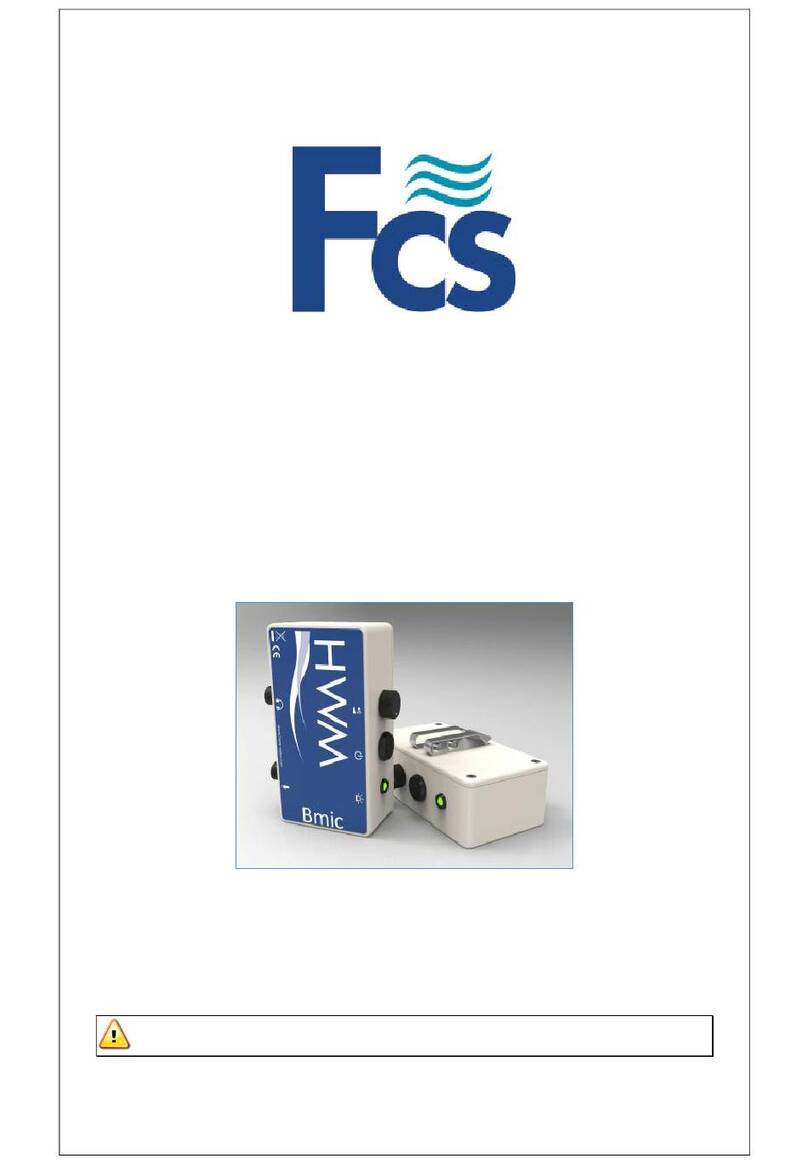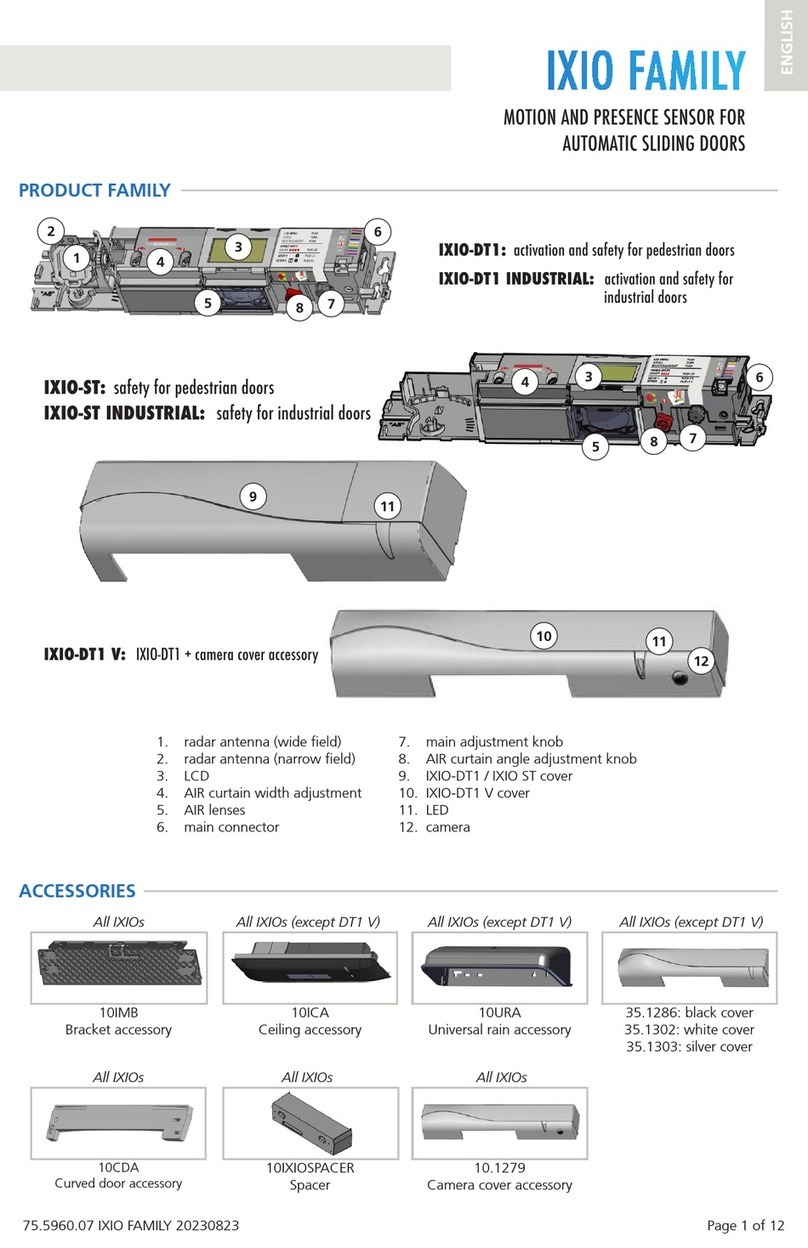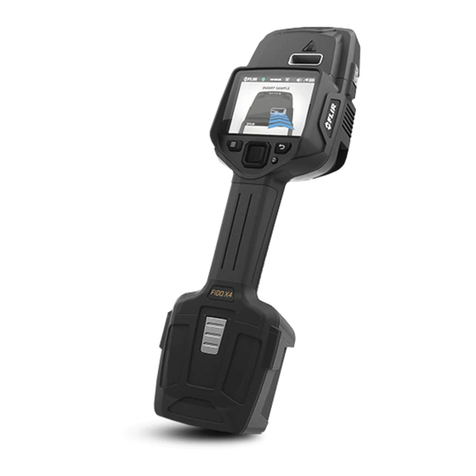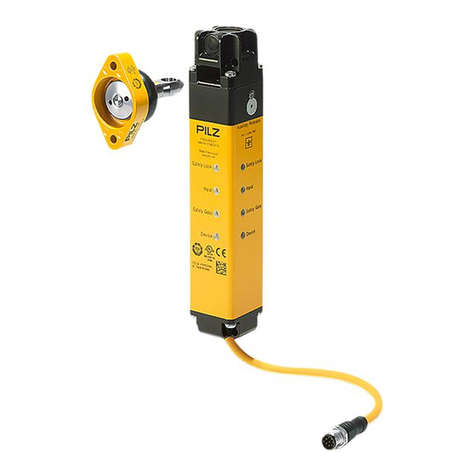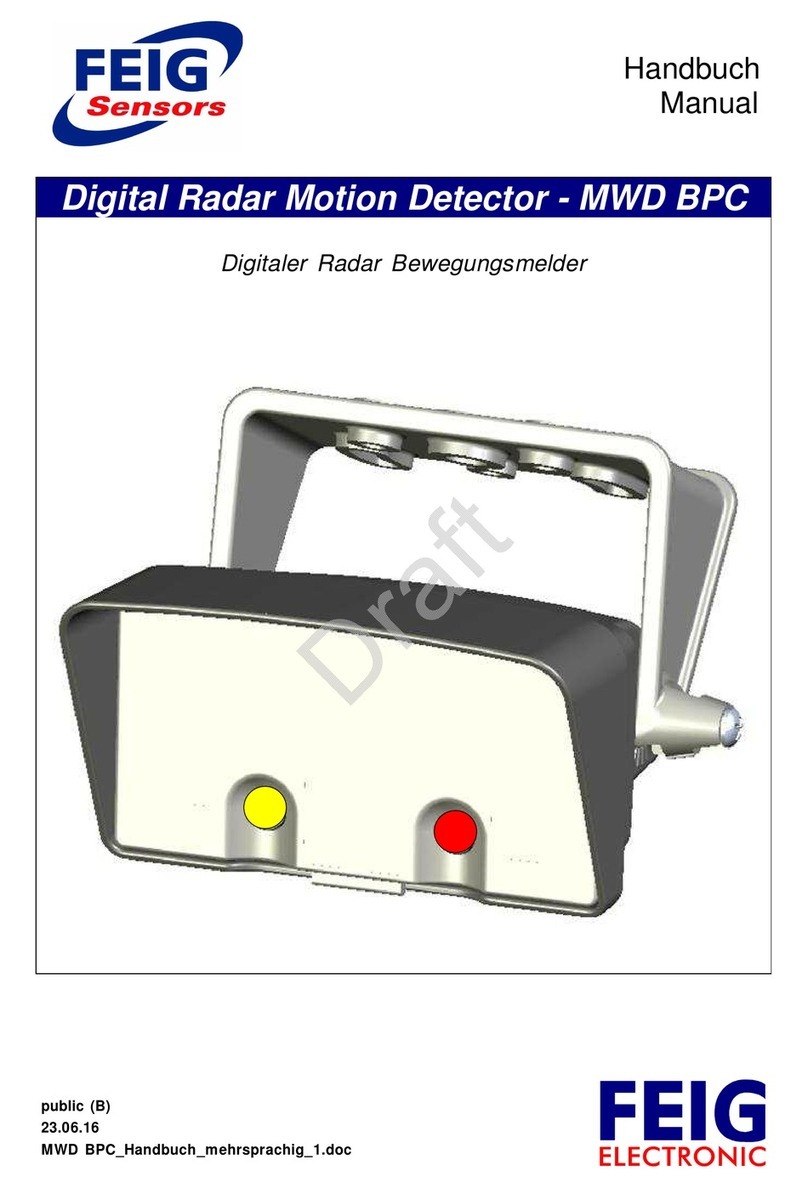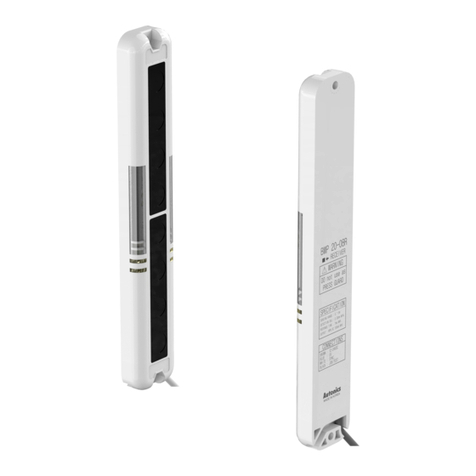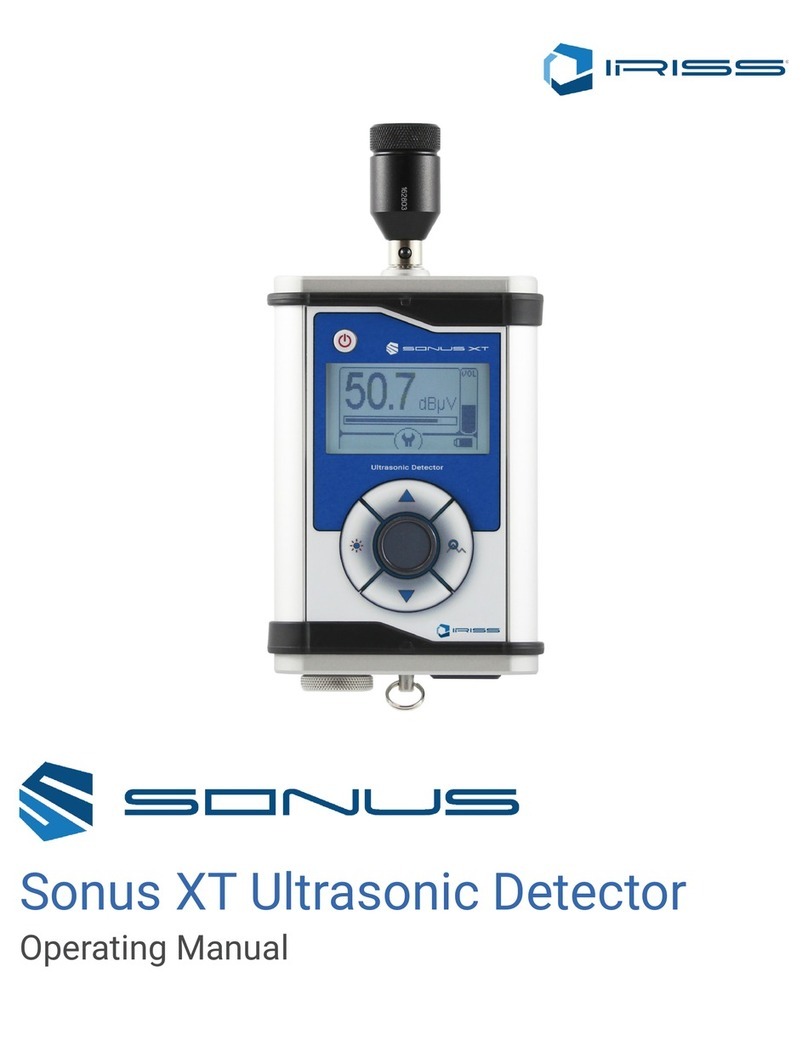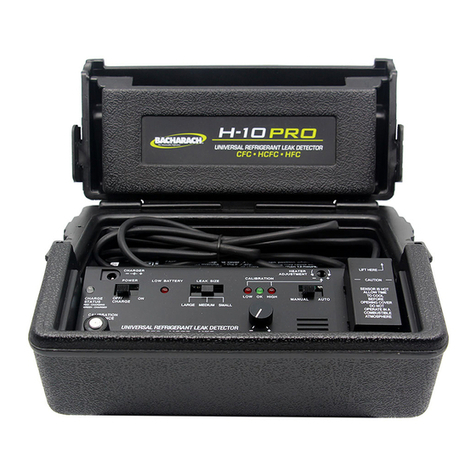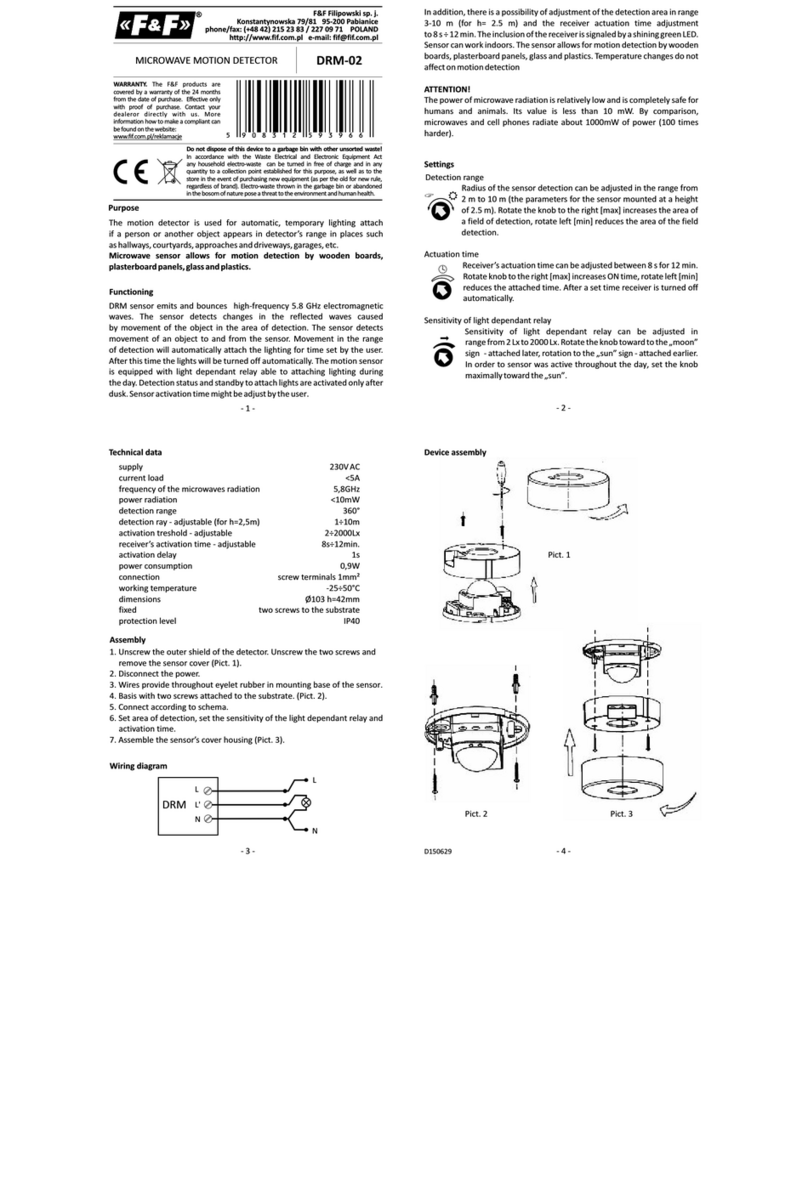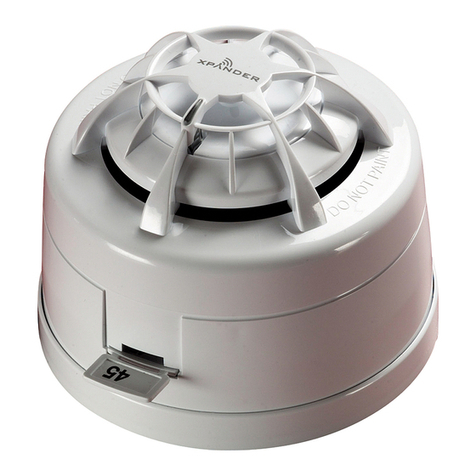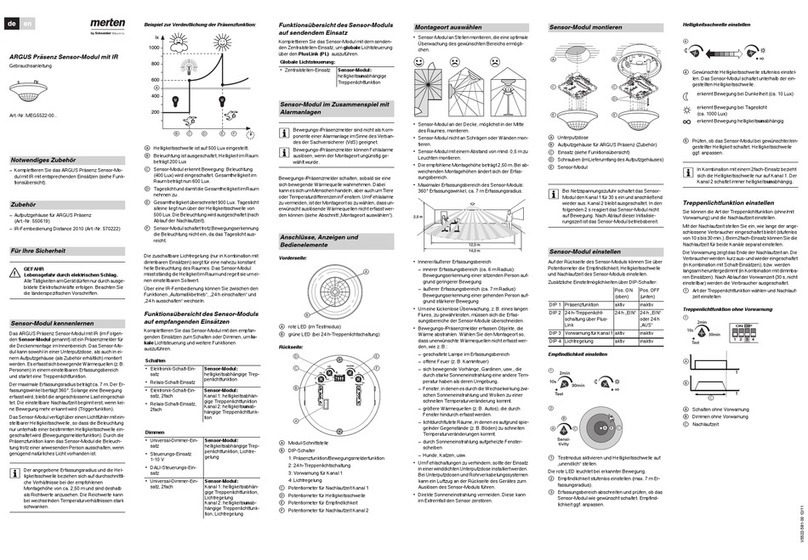FCS S30 Surveyor User manual

S30 Surveyor
®
S30 Surveyor User Manual
Fluid Conservation Systems, Inc
502 TechneCenter Drive, Suite B
Milford, Ohio 5150
Phone (800) 531-5 65
www.fluidconservation.com

2
TABLE OF CONTENTS
SECTION PAGE
1.0 INTRODUCTION 3
2.0 SYSTEM COMPONENTS 3
3.0 CONNECTIONS, CONTROLS & INDICATIONS 4 - 5
4.0 LEAK SOUND WAVES 6
5.0 TRANSDUCERS 6 - 7
6.0 LEAK DETECTION 7 - 10
7.0 LEAK PINPOINTING 10
8.0 BATTERY REPLACEMENT 11
9.0 WARRANTY 12

3
1.0 INTRODUCTION
The FCS S30 SURVEYOR is a precision leak detection/location
instrument incorporating several unique and advanced features,
including:
•Low Noise Design: To help the operator detect the minimum
signal level possible.
•Manual Volume Control: To provide great versatility.
•Analog Meter: To ensure consistent and accurate sound intensity
measurements.
•Adjustable Meter Control: To ensure accurate readings in a variety
of environments.
•Lightweight, compact, rugged and weather resistant to withstand
daily field use.
The S30 is designed as a survey instrument for use with the AX80
transducers.
2.0 SYSTEM COMPONENTS
2.1 TRANSDUCERS
2.1.1 AX-80 (standard) with replaceable 6’ cable or 10’ cable
2.2 S30 CONSOLE
2.3 HEADPHONES
2.4 GEOPHONE ADAPTOR PLATE (GROUND MICROPHONE)
2.5 PROBE ROD SET (3 PIECE)
2.6 BELT-MOUNTED CARRY CASE
2.7 PROTECTIVE STORAGE CASE

4
3.0 CONNECTIONS, CONTROLS AND INDICATIONS
Rear Panel
Diagram I – Rear Panel
3.1 SENSOR CONNECTOR: Accepts the male LEMO plug from
the AX80 transducer.
3.2 TRANSDUCER (SENSOR) CABLE: The AX80 transducer is
provided with a rugged 10 ft. cable. This cable is mounted to
the transducer by means of a screw-on type connector. This
allows for replacement of the cable in case of damage to a
connector or the cable itself. Under typical day-to-day use, the
cable should remain attached to the transducer. The connector
assembly has been mounted to the transducer and packed with
a special purpose silicone grease to waterproof the sensor and
to prevent corrosion of the terminals.
Note:
WHENEVER
THE
CONNECTOR/CABLE
ASSEMBLY
IS
DISCONNECTED
FROM
THE
TRANSDUCER,
REPACK
THE
CONNECTOR
WITH
A
DAB
OF
G.E.
#661
SILICONE
GREASE.
DO
NOT
USE
ANY
OTHER
SUBSTANCE.
3.3 BACKLIGHT SWITCH: Controls the backlight mode of the unit.
To enable the meter backlight, press the switch into the “ON”
position. To turn the backlight off, select the “OFF” position.
3.4 HEADPHONE/CABLE JACK: Used to provide the audio output
to the operator. For survey, insert the headphone plug into the
jack to monitor the output.

5
FRONT PANEL
Diagram II - Front Panel
3.5 ON/OFF BUTTON: Depressing and hold down on the ON/OFF
BUTTON to keep the S30 on and active. The red light will come
on to indicate that the S30 is operating. Release the ON/OFF
button and the S30 will turn off indicated by the on/off light going
out.
3.6 ANALOG METER: Indicates signal level. The meter reads
between 0 and 10 typically, depending on the intensity of the
leak signal input. The meter can provide valuable assistance to
the operator in determining the approximate location of a leak.
3.7 METER GAIN: Allows the operator to adjust the sensitivity of
the meter when the noise level is too high or too low for the
present setting. Turn the meter clockwise one click if the meter
is reading 0. Turn the meter counterclockwise one click if the
meter is reading above 10. Please note, though, that meter
readings can only be compared when the gain setting remains
the same.
3.8 VOLUME CONTROL: Rotating this inner knob allows the user
to control the volume level of the headphones (Each headphone
also has a control on the ear piece.) Turn the inner knob
clockwise to increase the volume and counterclockwise to
decrease the volume. Note that the meter reading is completely
independent of the volume control.

6
4.0 LEAK SOUND WAVES
The characteristic sound produced by a leak is a form of energy that
results from fluid escaping under pressure. This sound energy travels
as sound waves down the pipe in both directions from the leak site.
These waves are carried through the piping fluid and through the walls
of the pipe. Therefore, in order to detect leak sound, a device must be
able to detect the leak sound vibrations in the pipe wall or alternatively
on pipe fittings (valves, hydrants, etc.).
5.0 TRANSDUCER
Sound Pick-Up Transducers are the devices used to detect the leak
sound by generating an electrical signal in response to a mechanical
vibration. The standard transducer available for use with the S30 is:
AX-80 Transducer (accelerometer)
Leak
Sound Waves

7
Accelerometers are transducers designed to be placed in physical
contact with the pipe. The vibration that results from the sound waves
is sensed by a piezoelectric crystal in the accelerometer that generates
a small electrical signal proportional to the vibration. The amount of
signal in volts is determined by the intensity of the vibration as
measured in units of gravity, or "g's". Therefore, the sensitivity of an
accelerometer can be measured in Volts/g.
Because they use sensitive crystals to produce the electrical signal,
these accelerometers are susceptible to damage by mechanical shock.
They are rated for a shock of approximately 5000 g's; dropping the
accelerometer onto a hard surface from 3.5 feet results in a shock of
approximately 50,000 g's. HANDLE THE ACCELEROMETERS WITH
CARE, AS THEY ARE SENSITIVE PIECES OF EQUIPMENT.
6.0 LEAK DETECTION WITH THE S30
To utilize the S30 for detecting unknown leaks, a leak survey must be
conducted. A leak survey is the process of monitoring the distribution
system for the sound of leaks.
6.1 ACCESS POINTS AND SURVEY FREQUENCY
The typical access points that are used when conducting a leak
survey are: Main Line Valves, Fire Hydrant Valves, Fire
Hydrants and Service Connections. The number of access
points to be monitored will vary depending on how thorough a
survey you wish to conduct.
There are some rules of thumb that are helpful in determining
"how much is enough" with respect to leak surveys. These rules
are based on extensive field experience, but should still be used
only as guidelines. The predominant factor in determining the
distance between listening points is the type of pipe. For the
distances listed below, the most significant leaks in a system will
be monitored.
METALLIC (Iron, Steel, Copper) - sound on access points at
least every 500 ft.
ASBESTOS-CEMENT (Transite, etc.) - sound on access points
at least every 250 ft.
PLASTIC (PVC, Polyethylene) - sound all available access
points (i.e. services, gate valves, hydrants, etc.).

8
From the information listed above, it should be clear that leak
sound travels well in metallic pipe and not very well in plastic
pipe. Once leak sound is detected, treat the leak as a "known
leak" and listen at several access points to determine the
approximate location and where to place the transducers for
pinpointing with the correlator.
6.2 TRANSDUCER CONTACTING METHODS
The S30 provides two different methods of contacting these
access points.
1. Magnet - to attach the transducer to iron or steel
access points (e.g., valve operating nut).
2. Extendable Probe Rod - The rod can be made up for
17", 33" or 49" length to reach valves or curb stops
below which may be buried or under water. Simply
attach the magnet to the Wave Guide, followed by the
rods to make up the desired length. See diagram
below.

9
SOUNDING FOR LEAK NOISE
Once the transducer is properly positioned on the access point,
turn the S30 on. Use the VOLUME CONTROL to set the S30 to
a comfortable level for your ears. At this time the operator must
determine two things:
1. Do you hear leak sound?
2. What is the intensity of that leak sound?
If leak sound is monitored, note the location and relative signal
level for reference.
When this has been completed the operator advances to the
next access point. The operator uses the intensity of the leak
sounds to determine the approximate location of the leak. The
stronger or greater the leak sound intensity, the closer to the
leak.

10
7.0 LEAK PINPOINTING WITH THE S30
The S30 can also be used as a leak pinpointing device. Leak sounds
being emitted from a pressurized pipe can transfer through the ground
and be detected on the surface above the leak. This technique is
called "Surface Sounding" or "Ground Miking". The success of this
method varies from leak site to leak site. The variables that dictate
your effectiveness are: Depth of Pipe, Size of Leak, System Pressure,
Soil Conditions, Surface Material, Traffic and Wind.
In order to effectively utilize this method, the operator must already
know that there is a leak in the vicinity and he must know where the
water main is located.
7.1 SET-UP: To properly use the S30 for pinpointing, the ground
microphone plate should be attached to the bottom of the
transducer magnet. See diagram below.
7.2 PINPOINTING: Place the transducer assembly on the ground
above the water main. Press the “ON/OFF” BUTTON to activate
the S30. Determine whether or not you hear the leak at this
location. Use your ears and the meter to determine the intensity
of the sound and make a notation of it. Move the transducer
assembly about 3' and repeat the process. Continue this
process every few feet until you have discovered the loudest
Sound Waves

11
point on the surface. Mark the location. If possible confirm this
location by using a leak correlator or by repeated soundings.
Sounding for leaks requires patience and acquired listening
skills. The operator using the S30 must be prepared to practice
with the instrument and to learn by experience.
8.0 BATTERY REPLACEMENT
To replace the batteries, remove the two screws from the back plate.
To access the batteries slide the top Black cover on the S30 back away
from the removed screws. The batteries are immediately accessible
and removable, replace batteries and replace black cover and screws.
For optimum battery life, use high-quality alkaline batteries (2 9-Volt
type). Do not use rechargeable batteries as their lower cell voltage will
impair the operation of the unit.

12
9.0 WARRANTY
The S30 SURVEYOR, AX-80 Transducer and Interconnect Cables are
warranted on parts and labor for 12 months from date of shipment to
customer. Headphones are warranted separately under the
manufacturer's own warranty. If your FCS product should prove
defective in material or workmanship within the prescribed period, FCS
will repair or replace the product, at its sole discretion, without charge,
upon presentation of satisfactory proof of purchase. This warranty
applies only for normal, reasonable use of the equipment and does not
cover damage which occurs in shipment, or failure which results from
alteration, accident, misuse, abuse, neglect or improper maintenance.
This warranty is void if the serial number has been altered or removed
from a serialized product; if the product is modified in any manner
which FCS concludes, after inspection, affects the reliability of the
product; if the product has been repaired or serviced by anyone other
than an AUTHORIZED FCS Service Technician; if the product is
damaged due to improper installation, maintenance or operation in
accordance with the instructions which accompany the product.
THIS IS NOT A SERVICE CONTRACT. THIS WARRANTY DOES
NOT INCLUDE MAINTENANCE, CLEANING, PERIODIC CHECK-UP
OR CHARGES INCURRED FOR REMOVAL OR REINSTALLATION
OF PRODUCT.
Table of contents
Other FCS Security Sensor manuals
Popular Security Sensor manuals by other brands
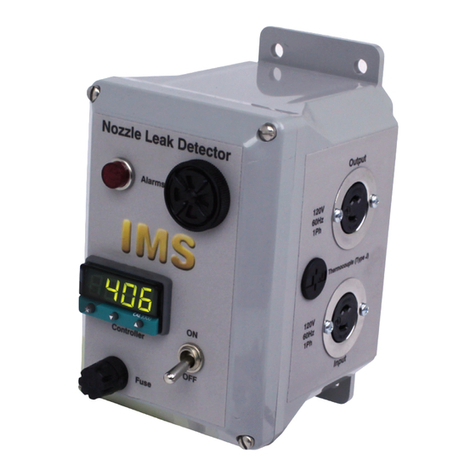
IMS
IMS 171707 Operator instructions

Schulz
Schulz TES013 instruction manual

Greenlee
Greenlee GT-16 instruction manual

Fire Sentry
Fire Sentry FSXP Installation guide and operating manual
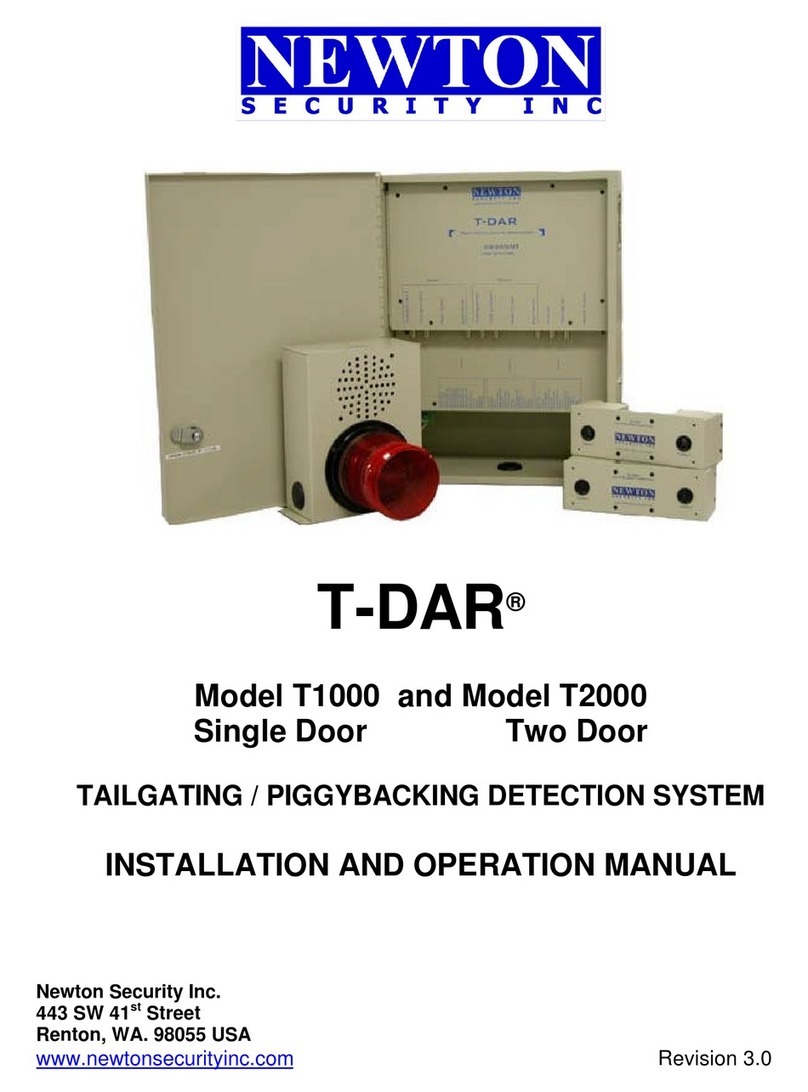
Newton Security
Newton Security T-DAR T1000 Installation and operation manual

Karat
Karat AC Installation and operation manual

